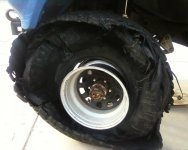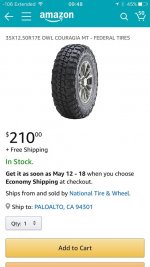swinler
New member
Extensive study on highway tire debris
For anyone seriously considering remold / retread tires, here's a detailed analysis of highway tire debris and casings. The conclusions may surprise you (see p. 188).
https://www.researchgate.net/profil...00000/Commercial-medium-tire-debris-study.pdf
For anyone seriously considering remold / retread tires, here's a detailed analysis of highway tire debris and casings. The conclusions may surprise you (see p. 188).
https://www.researchgate.net/profil...00000/Commercial-medium-tire-debris-study.pdf


